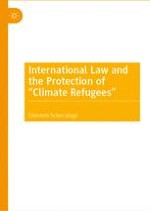2020 | OriginalPaper | Buchkapitel
4. How Many “Climate Refugees”? Pros and Cons of Maximalism and Minimalism
verfasst von : Giovanni Sciaccaluga
Erschienen in: International Law and the Protection of “Climate Refugees”
Verlag: Springer International Publishing
Aktivieren Sie unsere intelligente Suche, um passende Fachinhalte oder Patente zu finden.
Wählen Sie Textabschnitte aus um mit Künstlicher Intelligenz passenden Patente zu finden. powered by
Markieren Sie Textabschnitte, um KI-gestützt weitere passende Inhalte zu finden. powered by
